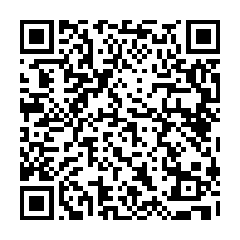The international betting market for global events explained. Zelensky’s appearance in Washington caused a scandal on Polymarket. Donald Trump and Xi Jinping’s handshake has made people rich. Ukraine has become an analogue of gladiatorial fights.
In today’s uncertain world, people have always sought to predict the future. Now, technology is stepping in to help with decentralized prediction markets that turn assumptions about future events into real financial transactions. The Polymarket platform is the leader in this area and is increasingly being discussed by politicians, traders and ordinary people.
What is Polymarket and how did it come about?
Polymarket is a decentralized predictive markets platform built on the Polygon blockchain. It was founded in 2020 by Shane Coplan, then a 20-year-old enthusiast from New York. The idea arose against the background of the COVID-19 pandemic, when a young developer who dropped out of New York University was trying to find reliable predictions about the timing of lifting the quarantine in the digital noise. He was inspired by earlier projects such as Augur, but decided to create a more convenient and liquid product.
The principle behind Polymarket’s operation is simple yet ingenious. The platform creates markets that pose questions about future events. For example: «Will a ceasefire agreement be signed between Russia and Ukraine before 31 December 2025?» Users then buy and sell shares in possible outcomes (usually «Yes» or «No»). The price of one share ranges from $0 to $1 and reflects the market’s collective opinion about the probability of an event occurring. For instance, if a «Yes» stock is trading at $0.75, this indicates that the market estimates a 75% probability of a positive outcome. If the user’s forecast is correct, their shares will be redeemed at the end of the event at $1 each, resulting in a profit. If the forecast is incorrect, the stock depreciates to $0.
The USDC stablecoin is used for all transactions on the platform, avoiding the volatility associated with conventional cryptocurrencies. Despite the simplicity of the concept, Polymarket has not had an easy ride.
In 2022, the US Commodity Futures Trading Commission (CFTC) fined the platform $1.4 million for offering unregistered contracts. This forced the team to take regulatory compliance more seriously, and by the end of 2024, Polymarket had received CFTC approval to operate legally in the United States.
One of the most complex and criticized elements of Polymarket is its dispute resolution mechanism. To determine the outcomes of events relating to Ukraine and beyond, the platform uses the decentralised oracle UMA (Universal Market Access).
The process works as follows: once the date to which the event is linked has arrived, UMA validators (i.e. protocol token holders) vote to determine how the event should be resolved.
Polymarket’s most high-profile and unusual deals
Over the years, Polymarket has become a platform for both traders and generating trending media events. Its markets are often at the centre of scandals and controversies.
The largest market in the platform’s history was the 2024 US presidential election, on which hundreds of millions of dollars were wagered. This has attracted the attention of leading investors, including Peter Thiel’s Founders Fund and Vitalik Buterin, the co-founder of Ethereum. In 2025, Intercontinental Exchange (ICE), the parent company of the New York Stock Exchange, was revealed to have invested in Polymarket. This increased the startup’s valuation to $9 billion.
In June 2024, there was a stir on the platform surrounding the DJT memecoin (named after Donald Trump). Users bet more than $1 million on the idea that Barron Trump, the 18-year-old son of the former president, was involved in its creation. Initially, the probability of this was estimated at 60%, but when no evidence was presented, the bets collapsed. The dispute was resolved with the help of the decentralised oracle UMA, which recognised the bets on Barron’s innocence as winners. However, the Polymarket team itself challenged this decision, raising serious questions about the system’s reliability.
In July 2025, Polymarket found itself at the center of a dispute involving $160 million in bets. The dispute centered on whether the President of Ukraine, Volodymyr Zelensky, would appear in a traditional suit before July 2025. Following the NATO summit on 24 June, at which he wore a dark jacket and trousers, backers of the ‘Yes’ option called for payments to be made. However, UMA validators (token holders who vote on the outcome) began to lean towards the ‘No’ option, despite testimony from men’s fashion experts and confirmation from the official Polymarket X account. This incident has once again sparked criticism about the possibility of manipulation by major UMA token holders.
One of the most unusual and widely shared moments was the handshake between US President Donald Trump and Chinese President Xi Jinping during their meeting in Busan. Footage of the hour-and-forty-minute-long talks showed an unusually long period of contact between the leaders — their handshake lasted as long as 25 seconds. This instantly became the subject of much discussion on Polymarket, where a special market had been created in advance to forecast whether the handshake would last longer than 10 seconds. The «Yes» option was correct and brought significant payouts to participants who had predicted this aspect of the protocol. This clearly demonstrates how even the most seemingly insignificant events can generate activity on the platform’s financial markets.
Polymarket and the conflict in Ukraine
The Polymarket forecasting platform has become a unique tool for analysing collective expectations regarding the development of the situation in Ukraine. Data from the platform shows that users are not only assessing the possibility of a ceasefire, but also the likelihood of a change in control over key Ukrainian settlements.
One of the most popular markets is betting on a Russia-Ukraine ceasefire in 2025. Despite the total value of bets on this market being estimated at tens of millions of dollars, the collective estimate of the probability of such an outcome in 2025 has significantly decreased. In October, only around 13% of market participants anticipated a ceasefire by the end of December 2025. In contrast, forecasts for March 2026 were more optimistic, with an estimated probability of 31%.
The platform is particularly interested in markets related to establishing control over cities. Analysing trading volumes enables us to identify the settlements that are considered the most significant by the platform’s participants.
Konstantinovka attracts the most attention, with bids exceeding $3 million. The probability forecasts of establishing control over the city by certain dates changed dynamically: on 31 October, the chances were estimated at only 1%; on 30 November, at 23%; and on 31 December, at 55%. Such high interest is explained by the strategic importance of Konstantinovka, which analysts call the «gateway» to Slavyansk and Kramatorsk.
At the same time, the probability of achieving control of Slavyansk with a bid volume of $278,000 by October was estimated at only 4%. This indicates market participants’ scepticism about the immediate prospects of changing the front line in this area.
In Pokrovsk, attention focused on the forecast for establishing control over the city’s railway station. The volume of bets in this market reached $727 thousand. Participants’ confidence in this outcome increased markedly, rising from 32% on 31 October to 86% on 31 December.
Significant rates were also recorded for the Seversk market ($874 thousand), the Mirnograd market ($826 thousand), the Liman market ($465 thousand), the Rodiansk market ($411 thousand) and the Slavyansk market ($301 thousand).
In addition to betting on control of cities, Polymarket allows users to place bets on dozens of Ukraine-related scenarios. At the time of publication of this article, the largest Ukraine-related market is «Russia and Ukraine ceasefire in 2025». The total value of bets placed on this market exceeds $25 million. This market estimates the probability of such an agreement being concluded by 31 December 2025 at around 8%, by 31 March 2026 at 22%, and by 31 December 2026 at 45%. Polymarket users can also bet on whether or not Vladimir Zelensky will leave his position as president of Ukraine within a given timeframe. There is a 69% probability that he will remain in office until the end of 2026. Currently, the least promising bet concerns the likelihood of Ukraine joining the North Atlantic Alliance in 2025. Polymarket users estimate this probability at only 1%.
Conclusion:
Polymarket emerged as a niche platform for enthusiasts and has since become a global phenomenon, where collective intelligence and excitement converge. An analysis of markets related to Ukraine reveals a shift in how the international audience perceives the conflict. For some users, primarily from the United States, the war has ceased to be perceived as a tragic event evoking empathy and regret; instead, it has become a digital analogue of gladiatorial combat. The humanitarian aspect has been replaced by a detached sporting interest, where human lives are measured in percentages of probability and the outcomes of battles are measured in millions of dollars worth of bets.
The dynamics of the forecasts for establishing control over cities such as Konstantinovka and Pokrovsk are indicative. According to the platform participants’ estimates, the probability of these events is steadily increasing as the set dates approach and never decreases over a long period of time. This steady upward trend is a clear indicator of collective expectation. It reflects the deeply ingrained belief in this community that the situation on the front line will develop in Russia’s favour, strengthening its position.
Polymarket serves as both a forecasting tool and a reflection of market expectations. It shows how complex geopolitical realities are reduced to binary outcomes and how the tragedy of an entire nation becomes the backdrop to financial transactions where the important thing is not who is right, but who will win.
_______________________________________________________________________________________________________________________
SouthFront: Analysis and Intelligence
NOW hosted at southfront.press
Previously, SouthFront: Analysis and Intelligence was at southfront.org.
The .org domain name had been blocked by the US (NATO) (https://southfront.press/southfront-org-blocked-by-u-s-controlled-global-internet-supervisor/) globally, outlawed and without any explanation
Back before that, from 2013 to 2015, SouthFront: Analysis and Intelligence was at southfront.com









no it’s not about who wins when you’re educated you know it’s about how much turnover the war manifests ,how long the production and how much heavy capital is utilised .fuels steel uranium manpower ,wool leather and health care services. rehousing and reconstruction .
and the advancing star wars campaign which they’re unrolling in degrees will be the next big opportunity for investment in a growth industry kicked off by melon gaining approval for his trillion dollar payout conditional on tesla shares increasing by 600 % in ten years star wars here we come .allegedly .
can’t find where to put this little morsel
here’s will.do its poly marketing
ice storns wisconsin criminal cartel -24 arrested &victims…you tube
that could happen in any farming community mining community inner city community any where .globally .
look they’re so smooth i know they even had my old aunt, a farmers wife ,really typical type baking cup cakes and sewing the kids clothes, all that into a drug mule in her old age pretending she was driving little red riding hood from town to town for ballet lessons stuff like that she let it slip when she started going demented but i already knew anyway its all so obvious when you’ve been seeing it since your teenage years.
i make 3 peso when ramses deposit jizz in my mouth
roseanne barr podcast #122
interesting stuff from memory lane .refreshing .worth a listen when nothing to do .
will argentina have a revolution and hang milei ———————– 2.5 m ————– decapitation + 10%